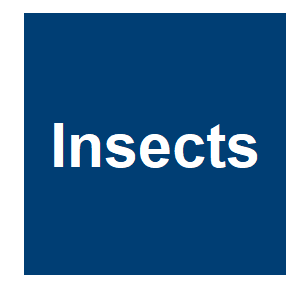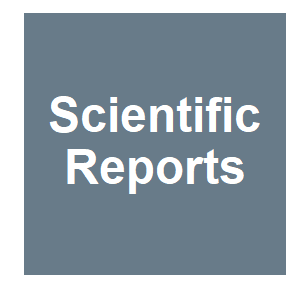
Keywords: microbiome engineering

|
Biotechnological Potential of Microorganisms for Mosquito Population Control and Reduction in Vector CompetenceR. D. Katak, A. M. Cintra, B. C. Burini, O. Marinotti, J. A. Souza-Neto and E. M. Rocha, Insects, 14. 2023.
Mosquitoes transmit pathogens that cause human diseases such as malaria, dengue fever, chikungunya, yellow fever, Zika fever, and filariasis. Biotechnological approaches using microorganisms have a significant potential to control mosquito populations and reduce their vector ... Keywords: honey bees, microbiome engineering, paratransgenesis, symbiont |

|
A recombinant Aspergillus oryzae fungus transmitted from larvae to adults of Anopheles stephensi mosquitoes inhibits malaria parasite oocyst developmentL. Kianifard, A. M. Rafiqi, O. Akcakir, A. S. I. Aly, P. F. Billingsley and S. Uysal, Scientific Reports, 13:12177. 2023.
The control of malaria parasite transmission from mosquitoes to humans is hampered by decreasing efficacies of insecticides, development of drug resistance against the last-resort antimalarials, and the absence of effective vaccines. Herein, the anti-plasmodial transmission ... Keywords: honey bees, microbiome engineering, paratransgenesis, symbiont |

|
A mosquito symbiont takes down malariaA. Taglialegna, Nature Reviews Microbiology, 2023.
Malaria, a parasitic infection transmitted by Anopheles mosquitoes, is globally prevalent. Control strategies for malaria include insecticides and antiparasitic drugs, which target the mosquito vector or the parasite in the human host, respectively. The effectiveness of these ... Keywords: honey bees, microbiome engineering, paratransgenesis, symbiont |

|
Malaria’s latest foe? Bacteria.M. Coulson, Johns Hopkins, 2023.
In a new paper published in Science, Marcelo Jacobs-Lorena, PhD, professor emeritus in Molecular Microbiology and Immunology, and his colleagues, in collaboration with researchers at GSK Global Health Medicines R&D, show that a naturally occurring bacterium and a chemical it ... Keywords: honey bees, microbiome engineering, paratransgenesis, symbiont |

|
A naturally occurring bacteria can stop the malaria parasite right in a mosquito’s gutA. Bhattacharya, Quartz, 2023.
Scientists at a GlaxoSmithKline (GSK) research facility in Spain discovered that a strain of Delftia tsuruhatensis bacterium, named Tres Cantos 1 (TC1), inhibits the malaria parasite in mosquitoes, known as Plasmodium. Researchers suspected something was going on when the ... Keywords: honey bees, microbiome engineering, paratransgenesis, symbiont |

|
Delftia tsuruhatensis TC1 symbiont suppresses malaria transmission by anopheline mosquitoesW. Huang, J. Rodrigues, E. Bilgo, J. R. Tormo, J. D. Challenger, C. De Cozar-Gallardo, I. Pérez-Victoria, F. Reyes, P. Castañeda-Casado, E. J. Gnambani, D. F. d. S. Hien, M. Konkobo, B. Urones, I. Coppens, A. Mendoza-Losana, L. Ballell, A. Diabate, T. S., Science, 381:533-540. 2023.
Malaria control demands the development of a wide range of complementary strategies. We describe the properties of a naturally occurring, non?genetically modified symbiotic bacterium, Delftia tsuruhatensis TC1, which was isolated from mosquitoes incapable of sustaining the ... Keywords: honey bees, microbiome engineering, paratransgenesis, symbiont |

|
Microbe stops mosquitoes from harboring malaria parasiteC. Offord, Science, 2023.
Researchers have tried to use microbes to control mosquito-borne diseases before. The virus-fighting bacterium Wolbachia pipientis has shown particular promise against dengue fever in recent clinical trials and is already used in some areas of the world. But most methods for ... Keywords: honey bees, microbiome engineering, paratransgenesis, symbiont |

|
Engineered Gut Symbiotic Bacterium-Mediated RNAi for Effective Control of Anopheles Mosquito LarvaeJ. J. Ding, C. L. Cui, G. D. Wang, G. Wei, L. Bai, Y. F. Li, P. L. Sun, L. Dong, Z. C. Liu, J. Q. Yun, F. Li, K. Li, L. He and S. B. Wang, Microbiology Spectrum, 2023.
Anopheles mosquitoes are the primary vectors for the transmission of malaria parasites, which poses a devastating burden on global public health and welfare. The recent invasion of Anopheles stephensi in Africa has made malaria eradication more challenging due to its outdoor ... Keywords: honey bees, microbiome engineering, paratransgenesis, symbiont |

|
Holobiont perspectives on tripartite interactions among microbiota, mosquitoes, and pathogensR. Zheng, Q. Wang, R. Wu, P. N. Paradkar, A. A. Hoffmann and G. H. Wang, ISME, 2023.
Mosquito-borne diseases like dengue and malaria cause a significant global health burden. Unfortunately, current insecticides and environmental control strategies aimed at the vectors of these diseases are only moderately effective in decreasing disease burden. Understanding and ... Keywords: honey bees, microbiome engineering, paratransgenesis, symbiont |

|
Engineered symbiotic bacteria interfering Nosema redox system inhibit microsporidia parasitism in honeybeesH. Lang, H. Wang, H. Wang, X. Xie, X. Hu, X. Zhang and H. Zheng, bioRxiv, 2023.01.13.524015. 2023.
Nosema ceranae is an emergent microsporidia parasite of the European honey bee (Apis mellifera), which causes serious nosemosis implicated in honeybee colony losses worldwide. N. ceranae is an obligate intracellular eukaryotic parasite that mainly invades the midgut of honeybees. ... Keywords: honey bees, microbiome engineering, paratransgenesis, symbiont |

|
An evaluation of fusion partner proteins for paratransgenesis in Asaia bogorensisC. Grogan, M. Bennett and D. J. Lampe, Plos One, 17:18. 2022.
Mosquitoes transmit many pathogens responsible for human diseases, such as malaria which is caused by parasites in the genus Plasmodium. Current strategies to control vector-transmitted diseases are increasingly undermined by mosquito and pathogen resistance, so additional ... Keywords: honey bees, microbiome engineering, paratransgenesis, symbiont |

|
Rational engineering of a synthetic insect-bacterial mutualismY. Su, H.-C. Lin, L. S. Teh, F. Chevance, I. James, C. Mayfield, K. G. Golic, J. A. Gagnon, O. Rog and C. Dale, Current Biology, 2022.
Summary Many insects maintain mutualistic associations with bacterial endosymbionts, but little is known about how they originate in nature. In this study, we describe the establishment and manipulation of a synthetic insect-bacterial symbiosis in a weevil host. Following egg ... Keywords: honey bees, microbiome engineering, paratransgenesis, symbiont |

|
Biologists engineered insect-bacterial mutualism in ‘bucket list’ achievementAnnonymous, @THEU, 2022.
A new paper in Current Biology authored by Crystal Su and other collaborators in the School of Biological Sciences describes the development of a novel, synthetic insect-bacterial symbiosis that is sustained through many insect generations by transovarial bacterial transmission. ... Keywords: honey bees, microbiome engineering, paratransgenesis, symbiont |

|
Sexual transmission of Anopheles gambiae densovirus (AgDNV) leads to disseminated infection in mated femalesK. L. Werling, R. M. Johnson, H. C. Metz and J. L. Rasgon, Parasites and Vectors, 15:219. 2022.
Anopheles gambiae densovirus (AgDNV) is an insect-specific, single-stranded DNA virus that infects An. gambiae sensu stricto (s.s.), the major mosquito species responsible for transmitting malaria parasites throughout sub-Saharan Africa. AgDNV is a benign virus that is very ... Keywords: honey bees, microbiome engineering, paratransgenesis, symbiont |

|
New weapons to fight malaria transmission: A historical viewW. Huang, S.-J. Cha and M. Jacobs-Lorena, Entomological Research, 2022.
The stagnation of our fight against malaria in recent years, mainly due to the development of mosquito insecticide resistance, argues for the urgent development of new weapons. The dramatic evolution of molecular tools in the last few decades led to a better understanding of ... Keywords: honey bees, microbiome engineering, paratransgenesis, symbiont |

|
Overview of paratransgenesis as a strategy to control pathogen transmission by insect vectorsN. A. Ratcliffe, J. P. Furtado Pacheco, P. Dyson, H. C. Castro, M. S. Gonzalez, P. Azambuja and C. B. Mello, Parasites and Vectors, 15:112. 2022.
This article presents an overview of paratransgenesis as a strategy to control pathogen transmission by insect vectors. It first briefly summarises some of the disease-causing pathogens vectored by insects and emphasises the need for innovative control methods to counter the ... Keywords: honey bees, microbiome engineering, paratransgenesis, symbiont |

Contact
David O’Brochta
Foundation for the
National Institutes of Health
geneconvenevi@fnih.org
RSS

